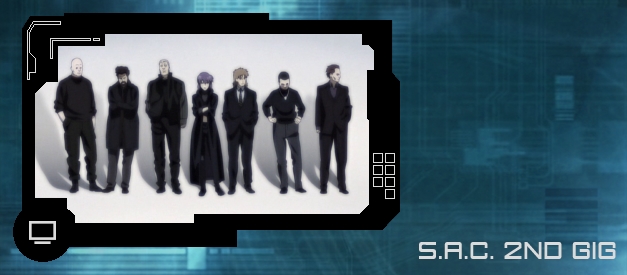
The first season of Stand Alone Complex dealt with The Laughing Man case involving a class-A hacker with the same name. It would include a huge cast of suspects that spread throughout the government from the local police administration; the Ministry of Health, Labour and Welfare; and even the Prime Minister's Cabinet. Acting as a police force, Section 9 was able to resolve the case, bring the accused to justice, and clearing their own name from any wrongdoing. But what if Section 9 was to be faced against an opponent that was bigger than them in terms of manpower and ideology rather than a specific person? How would they be able to tackle such a mission?
Director Kenji Kamiyama teased ideas like those for the second season of the Ghost in the Shell TV series, Stand Alone Complex. This makes sense as you'd want to up the ante from what came before. The primary case that arcs across this new season is based on a small side note to a story from season one regarding a region in Japan where refugees from the last two world wars migrated towards for security and employment. And if you were curious about what happened during the first thirty years of the 21st century in this universe, then rejoice as you'll be getting the full scoop.
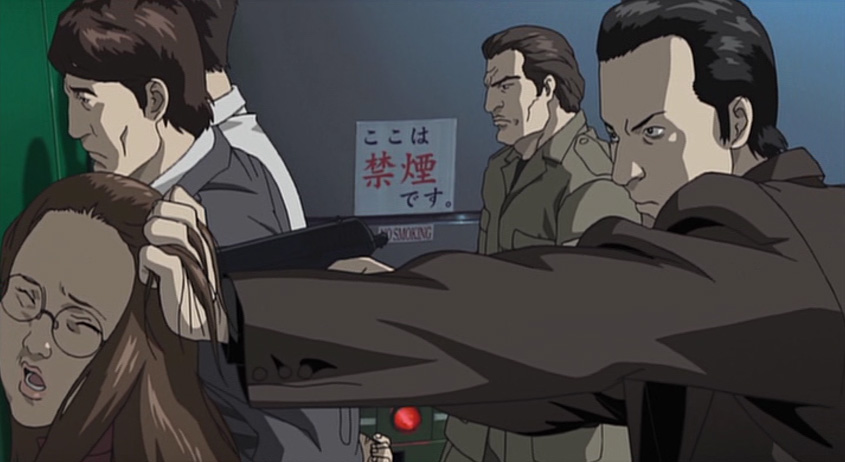 |
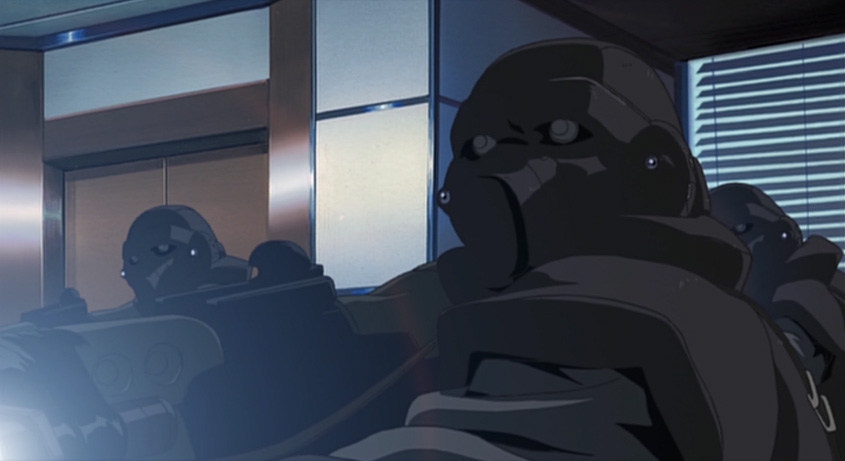 |
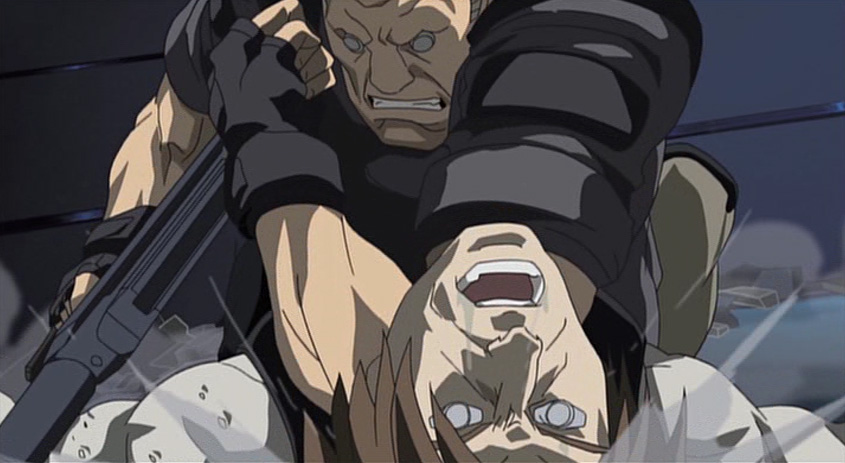 |
The second season takes place around a year after the events from the first, so now it's 2031. After Section 9 is cleared from the false accusations about the team carrying out a coup, the group is back together, but at this time legally can't proceed with carrying out any missions due to the Special Forces Restriction Bill that was passed to strip them from power because of the charges put against them during the past administration. Episode one shows the team unofficially showing up alongside the police to the Chinese Embassy where a terrorist group is holding hostages, demanding the expulsion of refugees from Japan as they are acting as a weight for social issues like unemployment for Japanese citizens and a strain on taxes. This group refers to themselves as the Individual Eleven. This one event will spark all that takes place during this season.
You see, after World War III, Japan was decimated and needed a quick way to rebuild the cities that were bombed, including ones that were hit with nuclear missiles, so they opened their borders and allowed for a large mass of refugees from war torn Asian countries to enter Japan to act as a cheap labor force to rebuild those cities. Now with Japan back as an economic superpower and after a decade since World War IV ended, the need for refugees is no longer necessary as they once were. China, closing their boarders to any refugees is the reason why the Individual Eleven took over the Chinese Embassy, blaming them for the large influx of migrants to their country.
Not too long after this is when a number of unmanned, A.I. operated military helicopters begin acting on their own and started swarming over a refugee district, rubbing the local refugees the wrong way by seeing this as an unprovoked threat to them and their livelihood by the government. Both messages from the Individual Eleven and this helicopter incident act as triggers for a heated debate the country has to overcome regarding what to do with the refugees. Both sides of the argument have their supporters and clashes will certainly occur, leading to what could be a civil war.
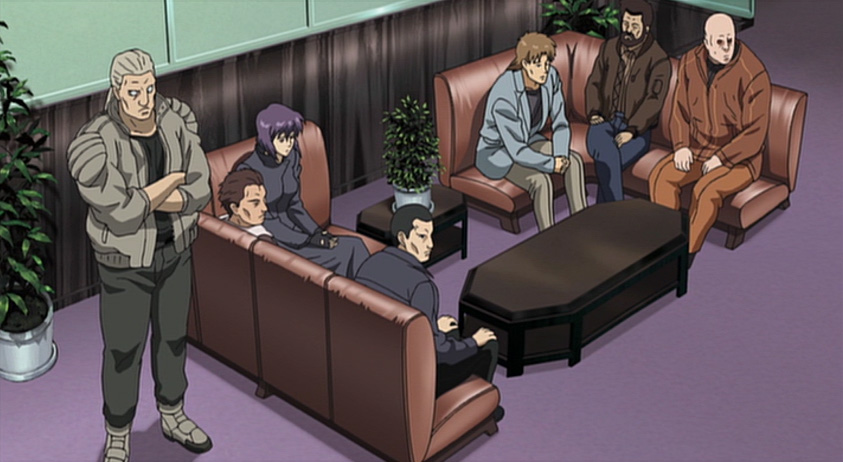 |
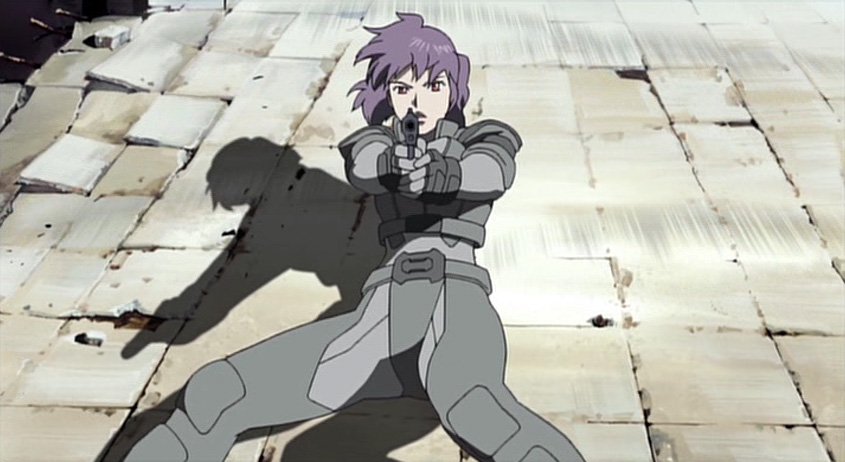 |
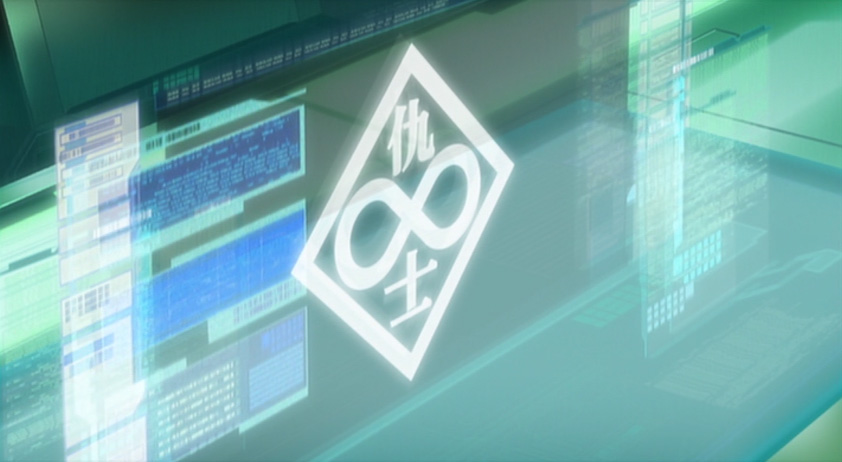 |
Around this time is when Section 9 is officially relisted as a Public Security entity and can go back to resolving criminal cases as they did before. Their budget also includes for an expansion of recruits, so S9 will soon see a fresh set of rookies.
If you've read the manga you'll notice there's a lot of references taking place in this season; more so than what was seen during the first. This was a real treat, having you point at the screen many times and yelling "I know where that comes from!" Although, not all of it is taken verbatim, so don't expect everything to be ripped out from the manga and used as a storyboard for the TV show. In relation, it's sort of like comparing the comic and TV show of The Walking Dead where even though the TV series takes scenes and characters from the comic, it doesn't necessarily mean it's going to follow the story in the comic. It'll shake things up, keeping readers of the comic guessing what happens next. Same goes for the Ghost in the Shell manga and TV show. It borrows, but doesn't copy.
Loved how they expanded Section 9 by bringing in characters like Azuma, who shows up on screen more than expected. Although he has less of a primary role here on the TV show than he did in the manga; but even so, still appreciate he's there to be on the team to help out with investigations and to go out in the field for tactical assignments. Same goes for Proto too as he makes his appearance with the rest of the Tachikoma maintenance crew. Characters like these two just make the organization feel more official; having other members than the core eight assisting to make sure the missions are successful.
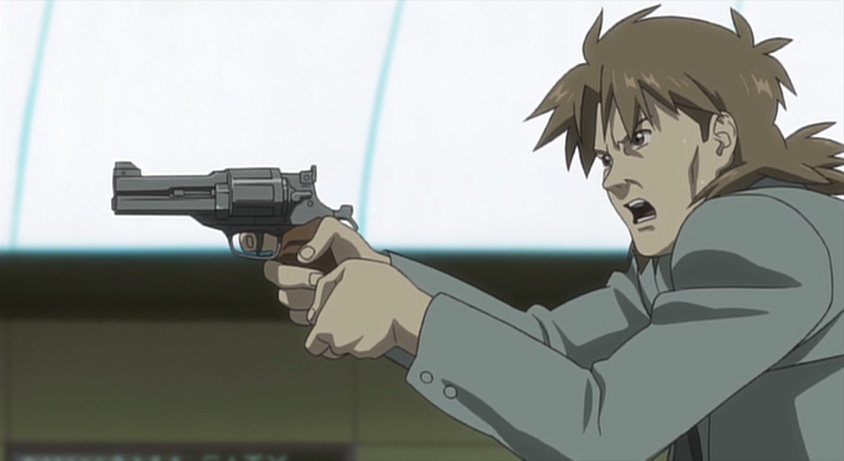 |
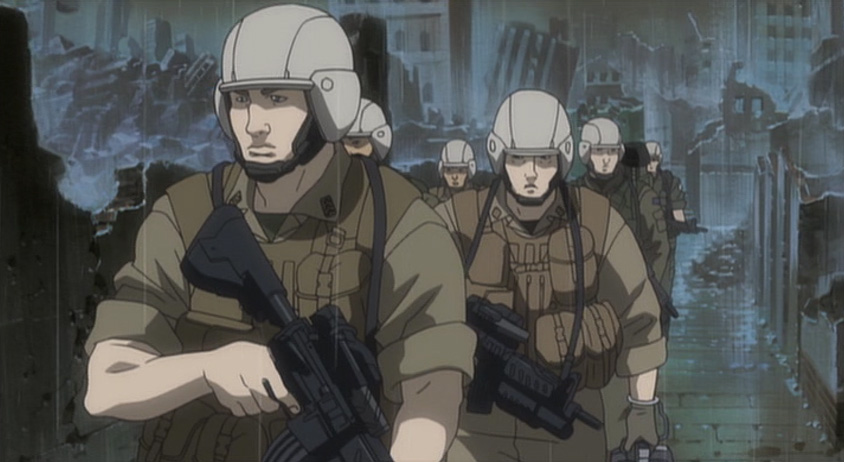 |
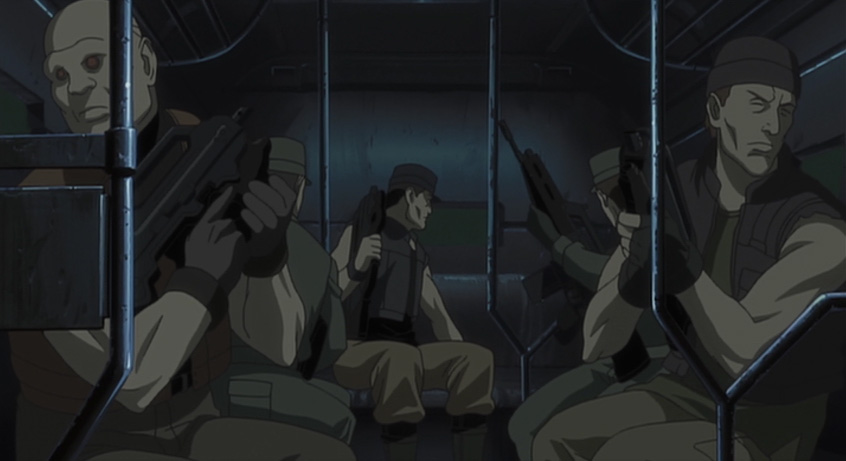 |
It'll be needed, because the phenomenon known as "Stand Alone Complex" from the Laughing Man incident is applied to this case as well, leading to question of who are the copycats and who, if any, are the original instigators to an event. Since the refugee situation is large with thousands of possible suspects, it becomes a daunting investigation to crack. Figure in that there's not just one refugee district but five spread throughout Japan, and you can comprehend how much a small team like Section 9 will have to do to resolve this case. Good thing all members are experts at info wars and data retrieval, because it's going to take a lot of combing the net to figure out!
The Tachikomas are back and they pull their weight by not only doing what they did before by acting as backup for the team in terms of tactical skirmishes, but they've been upgraded with software so they can act as agents, assisting Ishikawa and team by sleuthing cyberspace for clues and hacking into networks. Their agent roles mimic those of the agents Motoko Aramaki used in Ghost in the Shell 2: Man-Machine Interface. "Hey! I know where that came from!"
A thorn in their side is the newly created government agency called the Cabinet Intelligence Service, which will get itself involved or sometimes commandeer missions Kusanagi and crew are investigating. The person in charge of the CIS, Kazundo Goda, is a mysterious character whose callous disregard for anyone who questions his methods makes for a great villain. He's smart, assertive, and gives passive aggressive lashings on a constant basis that makes you want to hate him every time he shows up on screen.
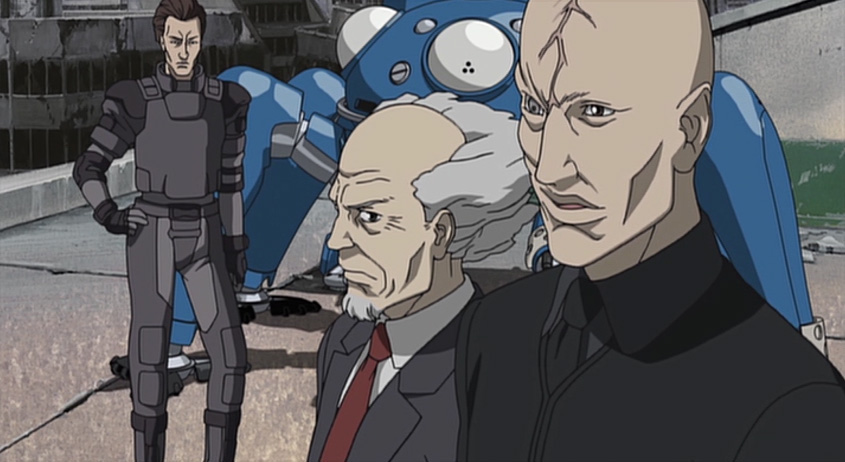 |
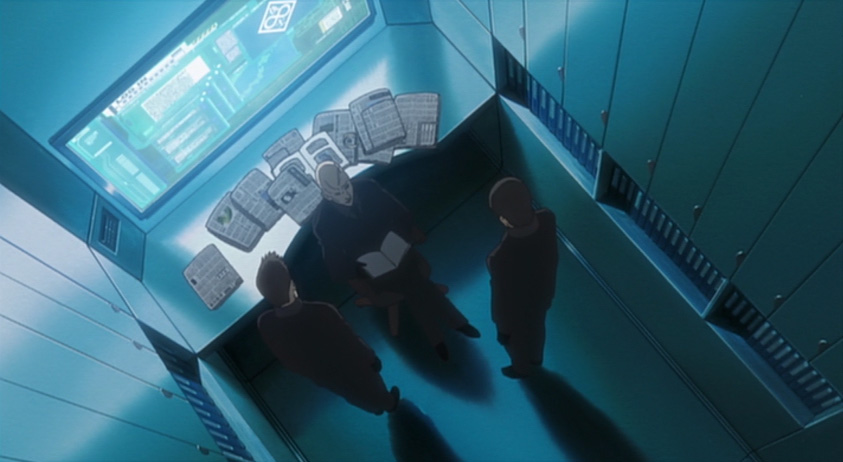 |
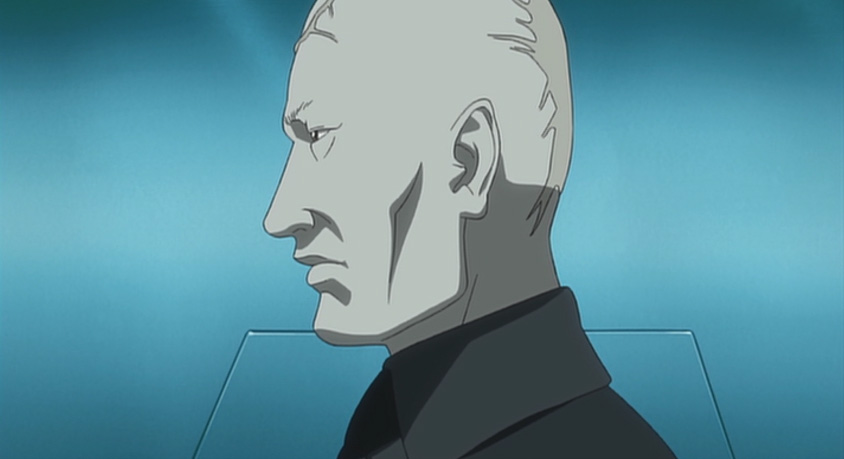 |
Just like before, this is a full length season containing 26 episodes where each is 30 minutes long. But instead of splitting the episodes into two different categories, indicating to the viewer which episodes are stand alone and which ones are part of the arching story, 2nd Gig goes beyond even that by including three categories that are titled "individual," "dividual," and "dual." The madness.
Yoko Kanno is the Music Composer for the Stand Alone Complex series for both seasons. She supplies one of the better soundtracks for an anime as the music she has created is as memorable as the beautifully crafted visuals. The music has a variety to it, but is wrapped under the theme of futurism. The majority of the music is electronic with varying sounds of subgenres. Some have vocals with lyrics from both male and female. For the openings to both seasons, the intro is sung by Origa, a Russian singer who Kanno sought out specifically for the show. The credits have vocals too, but from Scott Matthew with "Lithium Flower" for the first season and former New York Dolls guitarist Steve Conte for the second season with "Living Inside the Shell."
Being Yoko Kanno, there are some jazz tracks to spice things up that actually work well for this cyberpunk show. And of course there are some great guitar riffs which normally play when a big action scene is taking place. But what has to be the best tracks are the ones that have some emotional triggers built in like "Spotter" that is used throughout the first season, "Sniper's Theme" sung by Ilaria Graziano that is primarily used in Saito's origins episode, or "Beauty is Within Us" sung by Scott Matthew heard in episode 2 -- "TESTATION." "Go DA DA" is the perfect theme for Goda as it has an long, unnerving drum beat with long pauses in between. Add in the odd use of harmonicas to ratchet up the unsettling tension the song brings, and you got yourself a great track.
Returning are the background episodes, and this time we get the scoop on Pazu and Saito. "MAKE UP" involves Pazu as he is setup for a crime where someone is impersonating him. The local cops want to bust him due to all of the evidence stacked against him, but Section 9 believes he is innocent. Believing this case is a personal one, he sets out alone to resolve it. While not incredibly exciting, it does have a pretty good climax with a reveal that leads into a battle involving a knife fight, so that's rad.
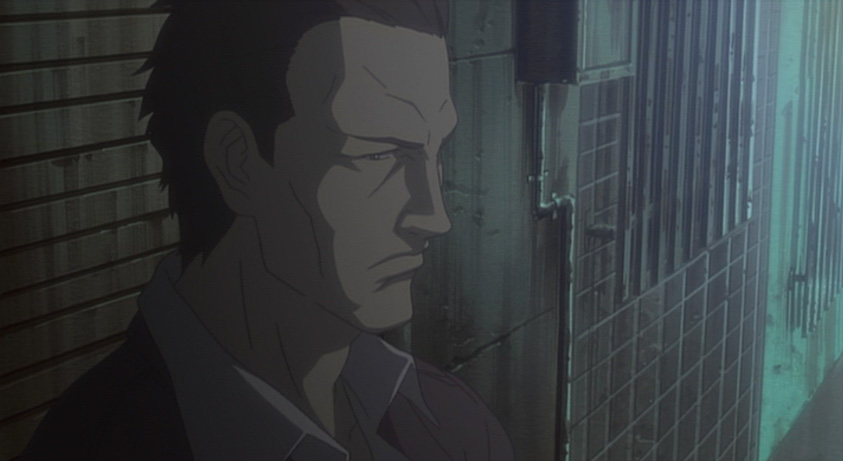 |
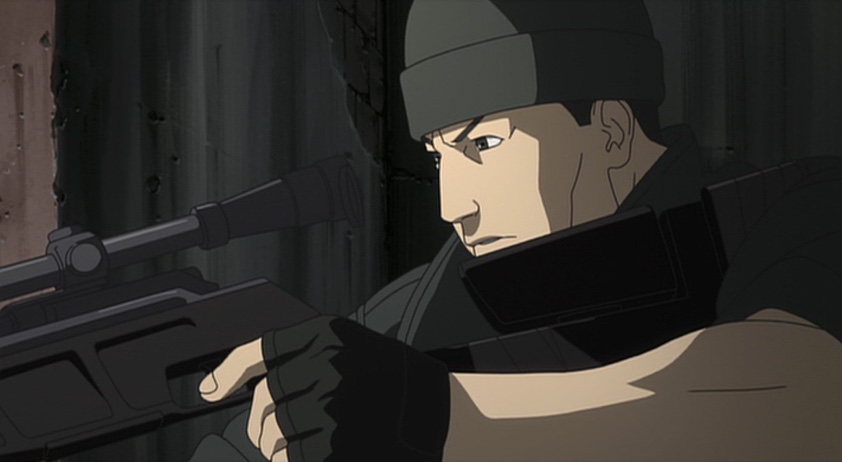 |
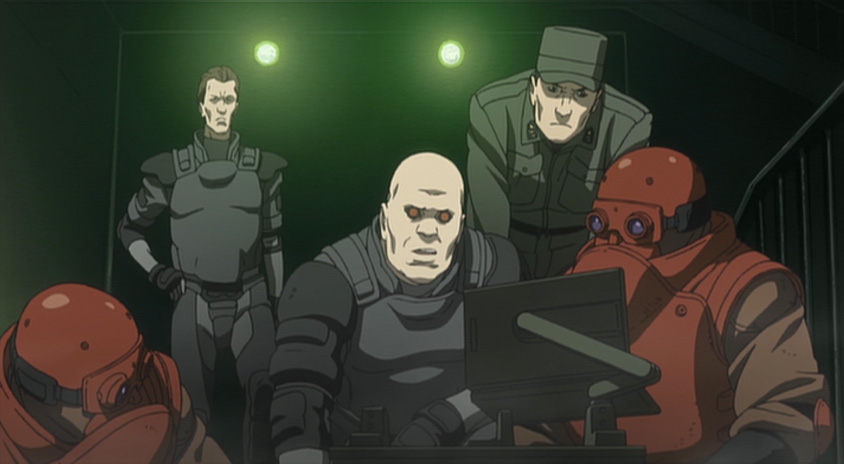 |
But Saito's has to be one of the better episodes showing his past when he first crosses paths with his future comrades. Here we see him as part of a voluntary army that is assisting Mexico's provisional government during the American Empire led campaign of invading Central America to shut down the drug trade. While in Monterrey, he comes across a UN Peacekeeping force with a tactical nuke. It's this group where he first meets a younger Kusanagi, Ishikawa, and Batou. And with this episode we've caught a glimpse at everyone's past from Section 9 with the exception of Borma. Sure, he makes a small note in an episode where he mentioned he was a bomb maker during one of the world wars, but we need a full episode dedicated to him because it looks like there is more to his past than he is willing to reveal.
Grandiose is what Ghost in the Shell: S.A.C. 2nd GIG sought out to accomplish and they did it well. To take things to the next level at the upper levels of the government, dealing more with military than local police, being on the frontline of two conflicts, and having to tiptoe around social issues like the refugee policy the country is struggling to resolve, it makes for some great drama. Of the two seasons of Stand Alone Complex, the second season is the preferred one, but due to some references to the first season, it's necessary to watch the first before jumping in. But that's not knocking the first season, though; not at all. It's just a sign that the writers were able to outperform their previous masterpiece with another even greater work of art. It's rare, but this season is an example of this kind of accomplishment.
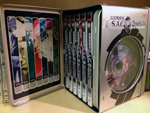 |
Ghost in the Shell: S.A.C. 2nd GIG
JP Original Broadcast: January 2004 DVD Volumes: 7 Episodes: 26 |
|
Innocence >>
|
Posted on: February 16, 2017
